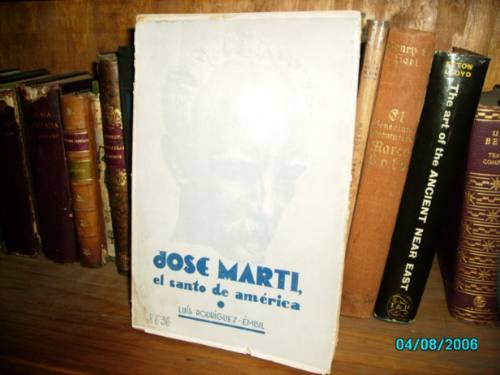4.2.4 The narrative work and other texts of Luis Rodríguez Embil (1879 – 1959)

Luis Rodríguez Embil lived in the United States from the outbreak of the 1895 war until 1901, so he received part of his education in the United States. In 1903, his narrative piece “Almas de Ave” (Almas of Bird) won him first prize in the competition held by the Havana newspaper “El Mundo” to mark the first anniversary of the Republic.
Two years later, he won first prize at the Salamanca Floral Games, chaired by Miguel de Unamuno, for his work “Pecado mortal.” During this decade, he also won first prize in the “Mundial Magazine” competition, edited by Rubén Darío, for his narrative piece “Córdoba triste” (Sad Córdoba). This demonstrates the literary recognition he had achieved.
In 1908, his first book of short stories was published, entitled “Gil Luna, artist.” In addition to an appropriate narrative connection, the texts contain a lyricism that brings them closer to the so-called poetic prose, which still has a strong romantic heritage.
In 1920, he published “The Vital Lie,” a series of intimate narratives that distanced him from the then-prevailing literary molds. Although he still retained his lyrical leanings, it displayed a more structured narrative and a mastery of dialogue as a driving force of narrative sequence.
His narrative career also included winning an award at the 1925 Inter-American Literary Competition and the publication in 1913 of a work entitled “De paso por la vida. Viajes” (Passing Through Life. Travels), which did not achieve the same significance in its field as the aforementioned works. He also published “El imperio mundo” (The World Empire) in 1928, which contains chronicles reflecting the situation in Austria-Hungary during the First World War, associated with his work as a consul.
He also wrote several essays and a study on the figure of Martí, entitled “José Martí, the Saint of America,” for which he received an award in a government-sponsored competition in 1938. He was a member of the National Academy of Arts and Letters and the Association of American Writers and Artists, in addition to belonging to other cultural institutions. He published works in “El Fígaro,” “Cuba y América,” “Cuba Contemporánea,” “Bohemia,” and “Carteles,” among others. He used the pseudonyms Julio Abril and Julián Sorel, the latter after the protagonist of “El Rojo y el Negro.”








